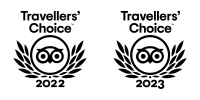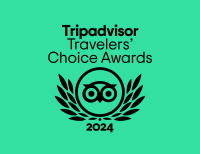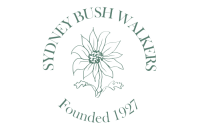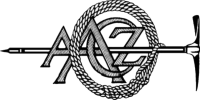Nepal FAQ
General FAQs
Why should I visit to Nepal?
Nepal is a country of contrasts. Spectacular natural niches combine with a vibrant culture and sense of history. Home to ten of the world’s 14 highest mountains, the country offers a magnificent setting for hiking and mountaineering and some world’s best whitewater rafting.
With its vast range of altitudes, Nepal is also home to an incredible variety of plant and animal species, including over 300 species of orchid. With over 800 bird varieties, it accounts for almost 10% of the world’s avian species.
The diverse national parks of Chitwan and Bardia encompass lowland tropical jungles and grasslands and Nepal shelters a rich variety of wildlife. The Bengal tiger, rare snow leopard, one-horned rhino and the Himalayan black bear is in the remote national parks.
The ancient culture and traditional architecture of Kathmandu means that the city boasts no less than seven World Heritage Sites, while Nepal is famous for its scenic monasteries and being home to Lumbini, the birthplace of the Lord Buddha- Light of Asia.
How to enter Nepal?
You can enter Nepal in two ways:
By air: Some major international airlines operating scheduled services to Nepal are Royal Nepal Airlines, British Airways, Biman Bangladesh, China South West Airlines, Druk Air, Gulf Air, India Air, Thai Airways, Qatar, Pakistan Air, Jet Air, and Singapore Airlines. By air, you will arrive at the Tribhuvan International Airport (only one international airport) in the heart of Kathmandu City.
By Road: There are several entry points by land route mainly from Nepal / Indian borders; and China/Tibet Boarder.
- Kodari
- Kakarvita
- Birgunj
- Bhairahawa
- Nepalganj
- Dhangadhi
- Mahendranagar
Scheduled public and tourist buses run to and from Kathmandu. We recommend you to travel by bus if you can cope with 10 to 12 hours of long drive for a fascinating mountainous view and snail tail roads that meet above the clouds.
How do I get my Visa for Nepal?
You can get a visa easily upon your arrival at Tribhuvan International Airport in Kathmandu.
- Tourist Visa with Multiple Entries for 15 days is obtainable by paying US $25 or equivalent foreign currency.
- Similarly, for 30 days is obtainable by paying US $40 or equivalent foreign currency.
- For multiple Entries of 90 days is obtainable by paying US $100 or equivalent foreign currency.
- You can also visit the Department of Immigration for more information and an online visa application.
What essential documents/items do I need to bring with me to travel to Nepal?
- You must bring a valid passport - must be valid for up to 6 months, keep an extra photocopy just in case.
- A copy of your travel insurance, cash, flight tickets.
- Emergency contact numbers of insurance and family members.
- Medications- bring prescriptions and the medications in its original containers to avoid customs inspection hassle.
- For Visa and permit- a copy of your travel insurance, a copy of your passport and 4 passport size photos
Do we book our international flights to and from Nepal?
Yes, you need to book your international flights. We are a local agent and it would cost you significantly higher to book through us. Please find more information on the International Flight site.
When is the best time to travel to Nepal?
The peak seasons for trekking are the spring (Mar to May) and the fall (Sept to Nov) when you'll have clear skies and superb mountain views. Keep in mind, this is also when the trails are most crowded (although there are ways to avoid the crowds).
The winter (Dec to Feb) and summer (Jun to Aug) months are also great times to visit—although weather can be unpredictable, these months offer a unique experience and fewer crowds.
For Chitwan (Nepal's southern jungle region), winter is the best time to visit when the temperatures are pleasant and the foliage less dense to allow for better wildlife sightings.
How much luggage can I take on domestic flights?
For mountain sector flights, you're allowed 5 kg for carry-on and 10 kg for checked-in luggage.
For non-mountain sector flights, you're allowed 5 kg for carry-on and 20-25 kg for check-in allowance.
Does your company provide airport pick up?
Yes, our representative will be there to greet and welcome you at the airport with a cardboard displaying your name.
Upon arrival, we will transfer you to your hotel on our tourist vehicle.
What currency should I Bring in Nepal?
Pounds, Dollars, and the Euro are easily accepted everywhere in Nepal. It would be best to exchange other currencies in Kathmandu.
The import of US$5,000 or more, or the equivalent amount in any other currency, you must declare the equivalent amount in any other currency on arrival. You must declare the export of local and foreign currency.
While trekking to different parts of Nepal, having the local currency, the Nepalese rupee is the best option.
You can easily convert your currency into the local currency through money exchanges, as per daily exchange rates.
How many days should I spend in Nepal?
If you're mainly looking to experience Nepal's cultural and natural highlights, you can have a great experience in 5-7 days, where you can visit two regions (likely, Pokhara and Kathmandu).
To get into the Himalaya on a multi-day trek, you'll want at least 10 days to have enough time to reach higher altitudes and safely acclimatize.
To undertake one of the longer classic treks in Nepal or to combine multiple regions and activities into one visit, 14-20 days is ideal.
Trekking FAQs
What is trekking?
Trekking is an outdoor activity of walking for more than a day, which may or may not involve camping outdoors. Trekking is a series of ascents and descents walking through forests of rhododendron, bamboo, oak, and hemlock, visiting one or two villages each day from 5 to 7 hours which is 9 to 14 km per day on average with a guide, cook and porters. Trekkers primarily achieve three things knowledge, pleasure, and good health. When they walk from place to place, they can observe the multiple components of nature that provide knowledge and pleasure.
Types of Trekking
Camping treks
Camping trek is the typical style of trekking types of Nepal, we are organizing camping trek all over the country to the area open for trekking. We organize camping trek, supported with a team of guides, cooks, Sherpas, and porters to accompany you and carry all the goods.
Adventures Trekkers can do camping trek in freshly open trails where there are no hotels and lodge, or less-traveled areas such as Upper Mustang, Dolpo, Humla, Lake Rara, Dhaulagiri, Manaslu, and Rasuwa at the north end of the Trisuli River are assessable by tented treks. Or in the east; Makalu base camp, the Arun valley, Topke Khola area and the Kanchenjunga. Camping treks cover both alpine style and climbing treks.
Tea house treks
Tea house treks are the most popular type of trekking in Nepal. Tea house trekking means providing food and accommodations in a guest house. Trekkers stop every night to eat and sleep at a local Tea House. This trek will take you trekking in the budget. Teahouse treks are on the more popular and easily accessible routes of the Everest, Annapurna and Langtang ranges. Tea House offers you western, continental meals, Nepalese meals and good accommodation with an attached bathroom with hot and cold shower in most of the places. Also, telephone and internet service are available in each Tea House.
Trekking grade in Nepal
We base trekking grade in Nepal on geographical location, altitude gain, and duration of trekking time per day. This shows that there are many trekking sites from soft and easy to moderate, strenuous and challenging. Trekking in Nepal is possible at all levels of trekking experience; if they think they fit and have strong willpower.
Easy/Grade A
Easy/ any age group can do. The walk is only 5 hours which involves less than 3000 meters of altitude gain and the total duration of the trek is 7 to 10 Days. There are plenty of opportunities to view the Himalayas and witness the local culture. Therefore, making it a short and easy trekking trip in Nepal. The examples of this trekking grade are Trekking to Poonhill, Everest view trekking around Kathmandu valley, trekking, etc.
Moderate/Grade B
Moderate/Grade B trekking activity comprises around 7 to 14 Days of duration with an altitude gain ranging from 3000m to 5000m. Trekkers should be able to walk for 6 to 8 hours per day with a mix of rough, steep and many 'ups’ and 'downs’. There won't be high chances of altitude sickness while joining moderately graded trekking adventure in Nepal. Good health conditions and level of fitness are essential.
Strenuous/ Grade C
Trekking would be around 7 hours a day with more steep ascends and a mixture of rough/smooth walking on varied geographical locations. Considered being tougher, therefore preparation for fitness and good health conditions are essential. However, you must be very fit for this trip.
Very Strenuous/Grade D
Very strenuous trekking requires climbing and mountaineering skills and knowledge. The elevations range from 4000m to 6000m and approx. 7 hours walk a day for trekking in Nepal. Therefore, one should be well prepared with physical fitness, health conditions, knowledge on acute mountain sickness too and previous experience. It covers very remote areas, traveling over snow-covered passes at an altitude of up to 6000meters. You may need two axes and crampons to cross the pass when there is heavy snow.
Challenging/Grade E
Challenging Trekking is only for those with an excellent level of personal experience and fitness and high tolerance levels. Altitude gain would be over 6000 meters above sea level and trekking duration would be 16-28 days for going the trekking on the higher altitudes. Most often snow-covered passes are needed to be tackled professionally in the safest way possible and claim to be daredevil extreme adventure enthusiasts.
How long will we walk on an average day's trekking?
Each day you can expect five to seven hours of walking, covering 10 to 14 km. However, above 3500m, the times will be the same but you'll only cover 8 to 9 km.
Importantly, all our itineraries are flexible and the weather, geographical and physical condition of the individual participant play a vital role in the schedule's alteration.
What are the basic tips for beginner trekkers who do not have any experience?
Unlike walking on a treadmill or paved path hiking involves more which is sometimes unpredictable. That is what makes it so enjoyable, some essential tips to make your treks successful are :
- Start small and chose the right trail for your fitness level
- Walk at a slow but steady pace
- Check the weather
- Keep yourself hydrated
- Keep the backpack light; will all your necessities
- Leave no trace; Take time to read the Leave No Trace Seven Principles and follow them
What are the permits required for trekking?
A TIMS (Trekker's Information Management Systems) card is necessary for any trekking activity in Nepal. Besides that, you will need area-specific trekking permits based on the region. Mountain Sun Valley provides you the permits as it will save your time to explore Kathmandu.
What date does the trek start?
Your trek starts on the date that works best for you, given all the tours we tailor our specialists to your travel dates. You need at least 1-2 days in Kathmandu before your trek for your specialist to organize the necessary trekking permits.
Do I need a trekking guide?
While visiting Nepal, trekking guides are almost mandatory to trek in Nepal for everyone. When you hire a trekking guide for your trip, the trip will be a lot more informative and memorable.
You get lots of knowledge about the country. But if the trekkers are well experienced and have visited at different places of Nepal many times, then she/he may not need the trekking guides. But trekking guides can play a big role to make your trekking memorable, they will provide information about the trekking destination along with its surroundings. Similarly, if any problems arise during the trekking, then the guides will solve it easily and it will be rather difficult for the trekkers themselves to solve them.
Who will be our guide?
Your guide will be a local Nepali, but a fluent English speaker. Most of our guides come from the mountainous regions of Nepal, above 3000m. We carefully select them based on their appropriate experience, leadership skills, and personal aptitude. To sustain local communities, Mountain Sun Valley only uses staff from the different Nepal's diverse ethnic communities; including Sherpas, Gurung, Magar, Rai, and Brahmin who have adequate knowledge about the culture, ecosystem, flora, fauna, geography, and history of Nepal. We provide the guides who have gone through special training package program like Intensive Wilderness First Aid, Trekking Guide Training, Eco Trekking Workshop & Adventure Meet, Rock climbing, Ice Climbing, and Mountaineering (for expedition leaders), etc, which are certified and approved by the government of Nepal.
What is the ratio of guides & porters to group size?
There is normally one guide for every five people, for Greater than five an assistant guide will probably join the group and will stay back with slower walkers in case the group splits up during the day. For porters, there is one porter for every two trekkers.
Do I have to carry my gear?
You'll carry your daily essentials (sunblock, water, hat, light jacket, and camera) but your porter will carry the bulk of your gear, such as extra clothing and overnight essentials. Porters are especially helpful for longer treks where you'll be carrying more gear. For shorter treks (2-3 days), you may opt just to have a guide if you're comfortable carrying your gear, but hiring a porter is a great way to support the local economy and is affordable.
How much can porters carry?
Porters typically carry up to 30 kg. Max. (to ensure they're not overloaded). For fragile items, such as cameras, it's still best to carry these items yourself. If you have over 15 kg., please carry the extra weight in your daypack.
Do I need insurance for travel and trek in Nepal? Can I get it there?
You should buy medical and mountain evacuation insurance for trekking up to 5500m. General travel and medical insurance for traveling into Nepal. We suggest you to buy an insurance policy in your country. We don't have mountain rescue insurance over here in Nepal. Check with your home country travel insurance company which covers the rescue helicopter from the mountain up of 5500m.
Is there a possibility of getting separate rooms for the trip? If so, how much extra will this cost?
During the trek, we will try our best, but normally the lodges have a twin sharing room. The lodges will provide a private room for one person when the room is free, and it does not require additional cost.
In Kathmandu, Chitwan, and Pokhara, if needed we will provide you a single room with extra cost depending upon the standard of the hotel.
What types of food will you serve during the trekking?
While trekking in Nepal, they prepare meals in tea houses, good standards of hygiene, fruit, and vegetable soaked in iodine water before cooked. The food along the trail will be simple and a mix of local and international cuisine. If the trekking is camping trekking, then the trekkers will mainly be served with the local foods of Nepal and continental and western foods. Because of the lack of electricity and refrigerators along our trekking route, you will eat a vegetarian diet.
In Kathmandu, you will find meals in good quality tourist restaurants. Most lodges serve boiled and filter safe water. It is also possible to buy the bottle of mineral water in the trek.
Does your company organize domestic flights, hotel bookings, and other services?
Yes. Since we are a Nepal-based company, we refer you to arrange your international flights, but it will include your accommodation, domestic flight ticket, Kathmandu city tour in our package. If you like to organize individual river rafting, sightseeing tours, mountain flight, we can organize jungle safari according to your interest.
How much should I tip to my guide and porter?
Tips do not form any part of the wages of guides, porters and other trekking crews. But they the porters, guide, Sherpa, and cook expect tips. It is a nice way of saying thank-you to someone who will play a large part in your trekking experience and who will prove invaluable to you on this trip.
We will pay our porters and guides more than working for the other big tour and trek companies. We suggest tipping 10-20% of the total trip cost.
You must give the tipping amount in Nepalese rupee. The porters live in small hill villages several days walking from the nearest bank or money changer. We suggest you to be generous about tipping job they have done for you.
How to avoid altitude sickness?
The primary key to avoid altitude sickness is to take it slow and steady. You should not gain more than 500m in altitude in the high altitude regions. Regular hydration is a must; also you can take medicines under the supervision of a medical professional.
Can I trek solo without a guide or porter?
Yes, you can absolutely trek solo in Nepal without a guide or a porter, but with proper equipments and preparation.
Some trails in Nepal do require a guide by compulsion because of the risk and freaking weather conditions.
Can I recharge my gadgets?
Yes, there are facilities for charging electronic gadgets at. an additional cost. Charges are on the higher side, and charging time gets limited so carrying a solar-powered charger or power bank is an option.
Can I get trekking gears and equipment on rent?
Yes, renting trekking gear and equipment. We recommend waterproof, hiking boots; perfect fit proper shoes always play an important role to decide how your trek goes.
Are there any other outdoor activities in Nepal?
Nepal is full of adventure. Many outdoor activities are available like bungee jumping, paragliding, rafting, rock climbing, jungle safari, and others. The only question is which ones are the ones that you want to make a beautiful memory of?
How does Mountain Sun Valley solve the emergency problem during trekking?
Our guides and porters are perfectly trained and skilled in handling emergency situations.
The company always stays stand by to provide emergency services as soon as possible.
You will get immediate first aid and necessary help. Helicopters stays ready 24/7 just in case the condition get worse.
Climbing FAQs
Qualification for the climbing trips
Mountains in the Himalayas are not only for extreme mountaineers. Many of our clients are lovers of outdoors who want to add a little extra adventure on their trip and are first-timers.
Many of the trekking peaks (small to medium level peaks) are not technically difficult. Clients are climbing without the help of supplementary oxygen. Good physical condition and sense of enjoying adventure activities will enhance you to enjoy the mountains.
Anyone able to hike daily 5-8 hours for two weeks, is not afraid of snow and can follow the very simple instructions of our climbing guide that includes following basic rope skill, wear and use equipment properly are qualified for small range (trekking peak) climbing trips. For large-scale mountaineering, it’s important to have experience of climbing smaller peaks, basic training, and understanding of technical issued related to climbing.
Guide or Climbing Sherpa
Climbing guides in the Himalayan Peaks are also known as climbing sherpa. The term Sherpa comes from a mountain ethnic group of Nepal who lives in Mountain area. Many of the climbing sherpas come from this Sherpa community, but not all of them. So, it doesn’t mean that your climbing Sherpa is always a Sherpa by ethnicity.
We do not choose our climbing guides just to hold the job, but to function as professional guides. They are trained in handling mountaineering expeditions by the Nepal Mountaineering Association. We don’t send climbing guides who have not climbed or observed the mountain you are heading in. Our guides are educated, responsible and speak good English. They are well trained in first aid and handling all situations in the field.
Cook and Food
Approach trek to the trekking peaks or an expedition peak up to base camp is completed by teahouse or camping treks. In camping treks, we provide our supply of food, equipment and support staff whereas in teahouse trek you will sleep and eat at the local family-run teahouses or lodges. At the base camps and higher camps, you will have a fully supported camping service. We send dry foods and fresh seasonal vegetables and fruits for the trip. While we trek through villages, we buy fresh vegetables and fruits from the villagers to support their economy and to use fresh foods for the clients.
Environmental ethics and Garbage deposit
We are very concerned in quality tourism and its ethics. Nepal mountaineering association (NMA) and the ministry of tourism have a rule of a certain amount to be deposited as a garbage deposit. This refundable deposit is taken care of by ourselves. Each expedition team is requested to bring back non- biodegradable items that are requested to bring back to the proper site or carry back home. And biodegradable items are properly disposed of in allocated sites in the route.
What happens if you fall?
The rope catches us. Why do you think we tie into the rope? Climbing falls are very common and usually a non-event. We typically free fall 10 feet or so, then the rope begins to stretch, slowing us down gradually. It’s more common to injure an ankle swinging into the wall during a fall, or hurt a finger due to overuse, than anything serious.
If a climber is injured and requires rescue
We provide emergency rescue helicopter to Base Camp, Shera guide will bring you down in best safe way possible to the Base Camp.








